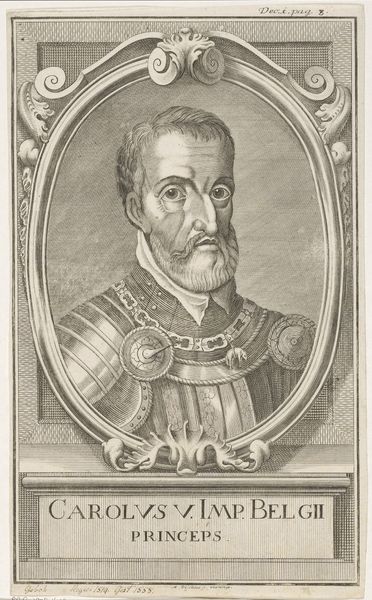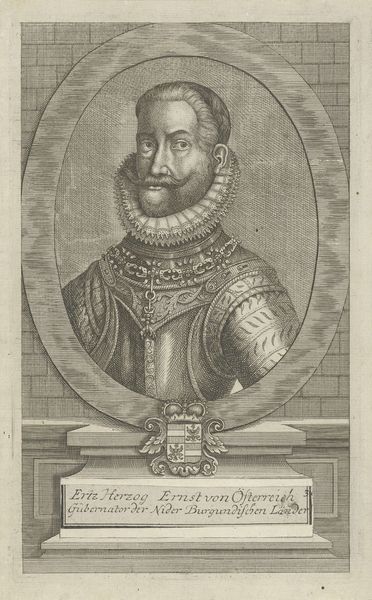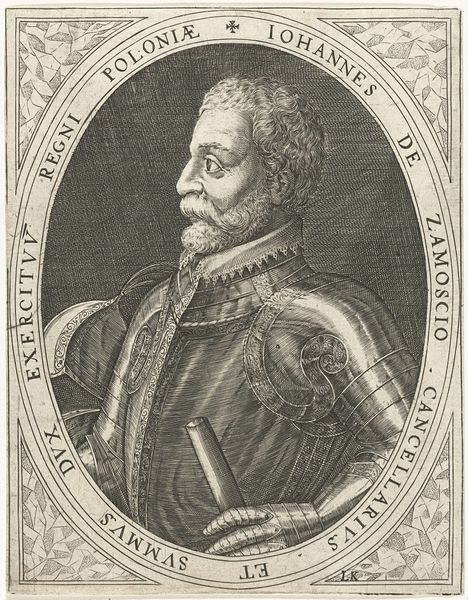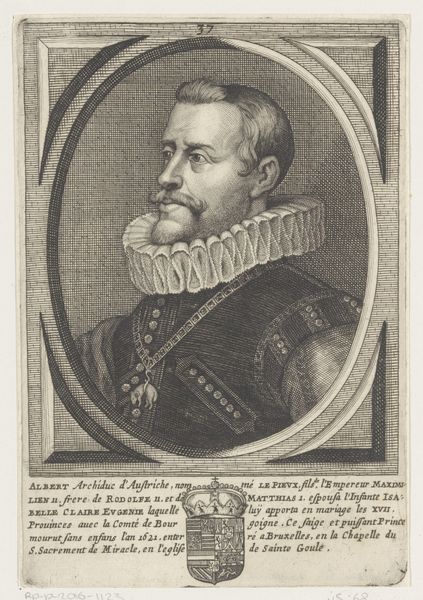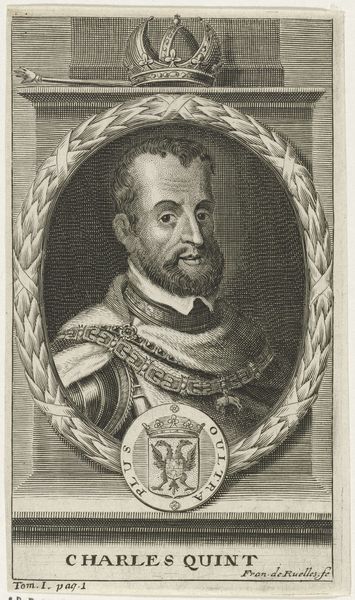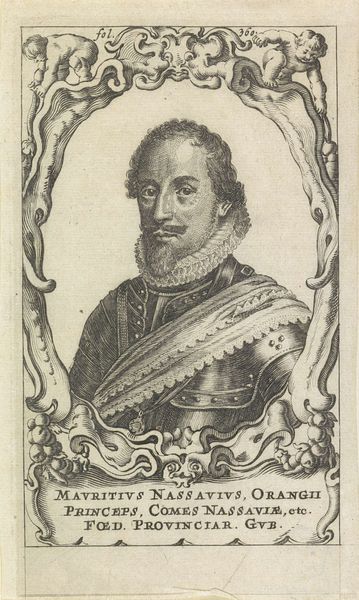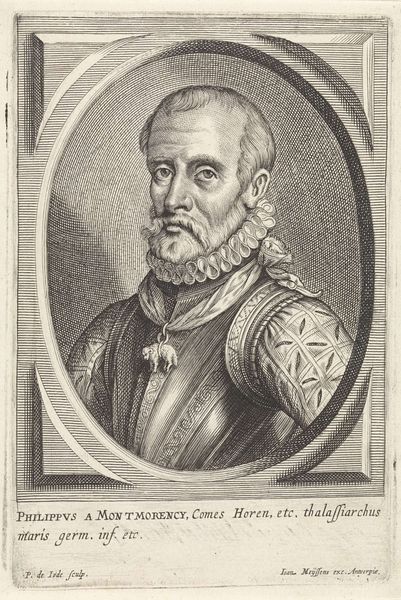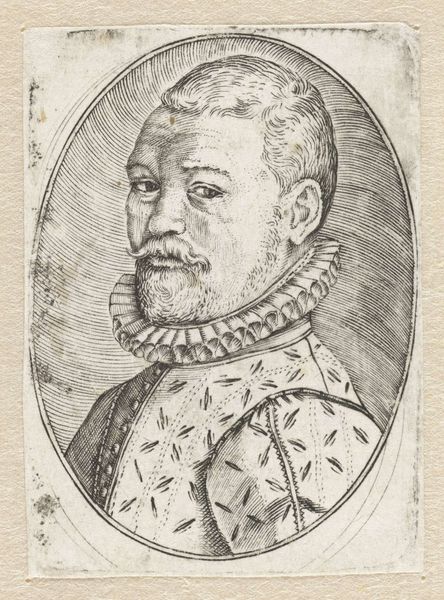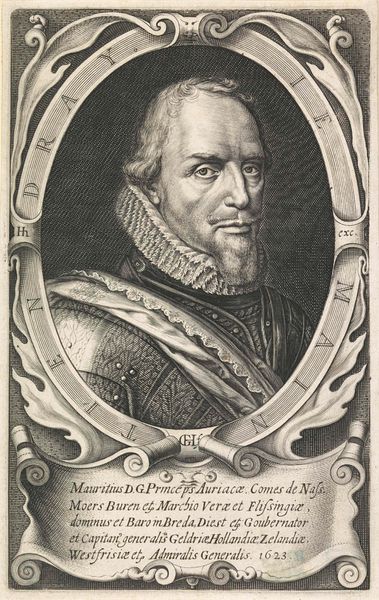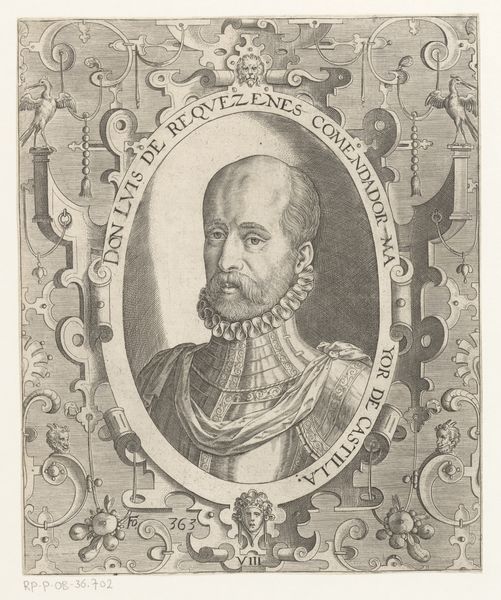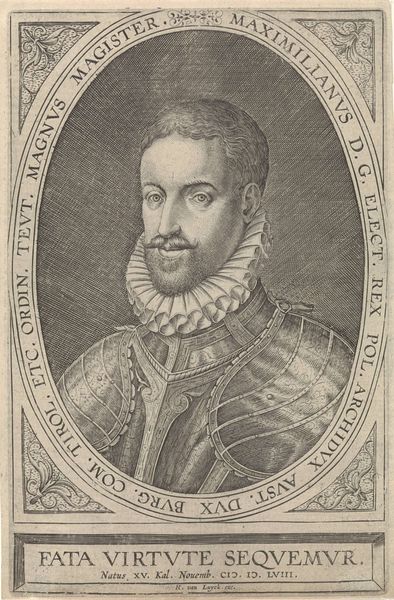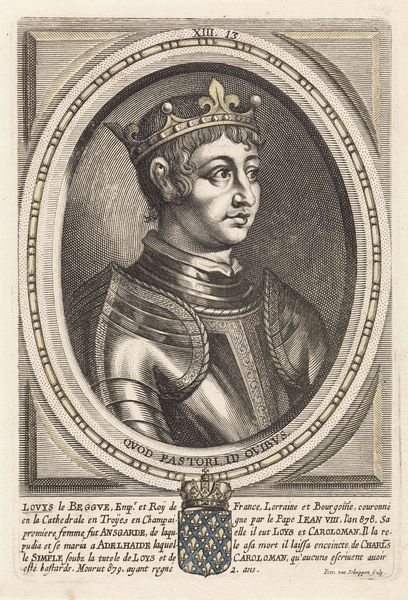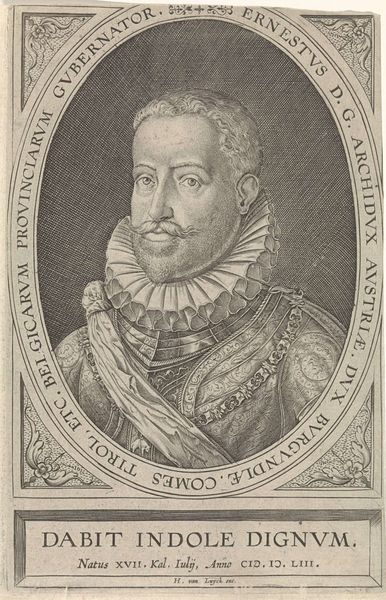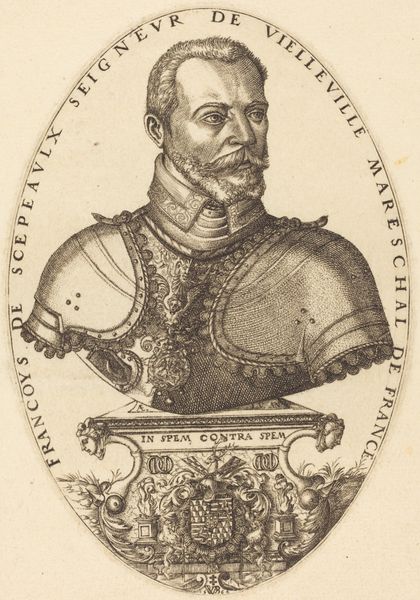
Portrait of Charles of Austria, Infante of Spain, in profile to the right 1645 - 1655
0:00
0:00
drawing, print, engraving
#
portrait
#
drawing
#
baroque
# print
#
caricature
#
portrait reference
#
history-painting
#
engraving
Dimensions: Sheet (Trimmed): 5 9/16 × 3 11/16 in. (14.1 × 9.3 cm)
Copyright: Public Domain
Editor: This is Pieter de Jode II's engraving, "Portrait of Charles of Austria, Infante of Spain, in profile to the right," created sometime between 1645 and 1655. I’m struck by how the sharp lines create such a formal, almost severe, image. How do you read this piece? Curator: It's interesting that you find it severe. Consider the context: This is a portrait of royalty, deeply embedded within the power structures of 17th-century Europe. What does the inclusion of armor signify beyond mere protection? What's he protecting? Editor: I guess it's less about physical vulnerability and more about portraying strength, authority... perhaps even projecting invincibility? The armor acts like a visual claim to power? Curator: Precisely! Think about how this image functions within the Habsburg dynasty’s propaganda. De Jode's portrait isn't just an individual likeness; it’s a representation of power, legitimacy, and lineage carefully constructed to reinforce their social and political dominance. How might gender play into this representation of power? Editor: Hmm, it feels very masculine in its presentation – the armor, the defined jawline. It’s like the portrait is trying to assert dominance in a very gendered way. The idea of masculinity reinforces his position. Curator: Exactly. This portrait speaks to the intertwined relationship between gender, power, and representation in shaping historical narratives. The way the image conveys masculinity plays a role in solidifying his place within the social order. Editor: So much to think about! It's fascinating to see how something that initially seemed like a straightforward portrait can reveal these layers of power and social dynamics. Curator: Absolutely. Analyzing the portrait through lenses of gender and power unveils the complex mechanisms at play during the period, expanding our understanding of art as a powerful tool in reinforcing the status quo.
Comments
No comments
Be the first to comment and join the conversation on the ultimate creative platform.
